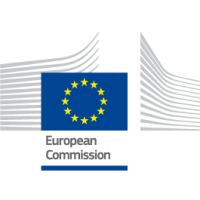
eTwinning for inclusion: The example of neurodiversity in classrooms
We share around 99.9% of our DNA, and it is the 0.1% that makes us different, unique and a resource for humanity. Each of us, in our unique diversity and neurodiversity, has the right to an inclusive and enriching educational experience. We are all entitled to fully develop our skills and, as Freire (2005) emphasises, to actively and consciously contribute to the society in which we live.
Description
Everyone’s brain is a special and unique mind – a universe with its own unique connections.
Olga Mosca, course moderator
Scientific studies show that around 15-20% of children are neurodivergent. There is a wide range of conditions, including from autism, ADHD and dyslexia, each with associated prejudices and stereotypes. Each also has characteristics that can present both challenges and opportunities in the classroom, ranging from a minimal attention span to astounding spontaneous creativity.
The neurodivergent brain
But how does the neurodivergent brain work? What are its strengths and challenges? This course is designed to enable teachers recognise, explore and work with the concept of “neurodivergence” to foster inclusive education in the daily routine of classroom teaching and learning.
Learning objectives
In this course participants will:
Understand the concept of neurodiversity by gaining a theoretical and practical overview of how emotions, attention, and memory influence cognitive experiences, motivation, and effective learning.
Discover actionable strategies for creating inclusive learning environments at the micro, meso, and macro levels through real-world examples and best practices, and integrate these into classroom activities.
- Experiment with designing personalised learning paths that support neurodivergent students, exploring how to integrate these paths seamlessly into class activities with support from eTwinning resources.
- Reflect on and apply inclusive teaching methodologies by participating in a final practical activity to consolidate and demonstrate understanding of neurodiversity in education.
Methodology & assessment
Certification details
Upon successful completion of the course, a digital course certificate is awarded. The certificate shows the name of the learner and key course details such as the estimated learning hours, the learning objectives, and a link to the course homepage.
Additional information
-
Language:English
-
Target audience ISCED:Primary education (ISCED 1)Lower secondary education (ISCED 2)Upper secondary education (ISCED 3)
-
Target audience type:TeacherStudent TeacherTeacher Educator
-
Learning time:5-10 hours
Past sessions
More courses by this organiser





